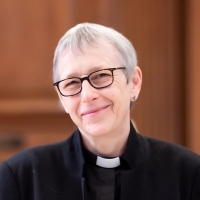Some years ago we had a memorable family holiday in County Mayo, on the west coast of Ireland – the ancestral home of the Joyce family. Dominating the skyline of the place where we were staying was an enormous and very distinctive conical mountain – which is in fact one of the most famous sites of religious pilgrimage in the whole of Ireland: Croagh Patrick, the holy mountain – which is, of course, particularly associated with the saint whose name it bears. On its summit is a chapel and on the last Sunday of July each year, thousands of pilgrims make their way up there, many of them walking barefoot, and join in one of the masses, the communion services, that are said continuously throughout the day.
So it was that on a rather dull and overcast morning, we set out to visit Croagh Patrick. I don’t think that any of us had any intention of actually climbing it. I myself would probably have been perfectly content to look up at it admiringly, take a few photographs, and then repair to the tea shop at base camp. But, you know how it is – someone had the bright idea that we should at least walk a short way up, just to admire the view – and, of course, the higher we climbed the more we found we were committed to the enterprise.
Now, for any of you who have not visited that part of Ireland before, when I tell you that Croagh Patrick is a mountain, I mean precisely that. I am not talking about a very big hill. It is massive and, on the day when we ended up climbing it, its peak was completely concealed by clouds. And it is one heck of a walk, up a rough rocky track, that sometimes has you slithering about on loose shale, and it is known to be treacherous in wet weather.
The first couple of hours of walking were very hard work, but just about manageable. And I have to say, that the view over the bay far beneath us, was absolutely stunning. But then we reached the cloud bank. And, at the same time, a torrent of icy rain began sheeting down. I have seldom ended up quite as soaking wet on a walk, as I was that day.
On one of the lower slopes of Croagh Patrick there is a clearing in which stands an enormous statue of St Patrick, accompanied by a large sign that says this (and I can quote it exactly, because I photographed it):
Croagh Patrick Pilgrimage. Every pilgrim who ascends the mountain on St Patrick’s Day, or within the octave, or any time during the months of June, July, August and September, and prays in or near the chapel for the intentions of our Holy Father the Pope may gain a plenary indulgence on condition of going to confession and Holy Communion on the Summit or within the week.
There followed detailed instructions about what you are suppose to do at each stage of the pilgrimage up the mountain, including things like walking fifteen times around the chapel saying fifteen Our Fathers, fifteen Hail Marys and one Creed.
Now, I have enormous respect for Roman Catholic tradition and spirituality, which has both informed and fed my own journey of faith in some very significant respects. But as I battled up that windswept mountain, drenched and frozen, thinking about the people who walk up there barefoot on the last Sunday of July each year, I found myself being immensely grateful for the Reformation. Until, that is, that I finally reached the summit – and I shall pick up this story again in a moment.
Some strands of Protestantism have always been extremely wary of the whole idea of sainthood. This derives from the distinctive Protestant focus upon, and concern with, the profound fallenness of all human beings, and the conviction that if it is indeed the case that only Jesus was sinless – that only Jesus has the power to save – then what place can there possibly be for the veneration of the saints? And in similar vein, if Jesus is there for us all, as individuals – what need to we have for saintly mediation?
However, there are two very important things to remember here, my Protestant brethren. Firstly, the idea of the ‘communion of saints’ is a central Christian doctrine – indeed, we shall all be affirming our belief in it when we say the words of the Creed together in a few moments’ time. And secondly, sainthood is a thoroughly biblical concept. You may have heard me observe before now that when St Paul writes to the young Christian congregations in his letters, he routinely addresses his fellow Christians as ‘saints’: ‘To all the saints in Christ Jesus who are in Philippi’; ‘To the Church of God that is in Corinth, to those who are sanctified in Christ Jesus, called to be saints’, to give but two examples. If St Paul were writing to us here today, he would begin his letter, ‘To all the saints who are gathered in St Bride’s, Fleet Street, Grace and peace to you, from God the Father and our Lord Jesus Christ.’ It makes you think, doesn’t it.
But sainthood in the Christian life, properly understood, is exactly like sacraments. God takes something incredibly ordinary – bread, water, wine, your life, my life – and transforms it into something profoundly different, something that is charged with the grace of God. that is what we are all called to be: transformed by the love and grace of God; to be sanctified, to be saints.
And when seen like that, the idea of the communion of saints starts to make sense. Because those whose lives are transformed by the love and grace of God, are drawn into the life of God. And a life with God and in God, can only be a life of praise and adoration and prayer. And a life of prayer only makes sense if it is a life that not only connects us with God, but also reaches out in love and compassion to our broken world, and draws us all up into that life of prayer that surrounds God: the life of the communion of saints. And the communion of saints also reminds us that, just as every saint has a past, so every sinner has a future.
But let us now go back to the story I was telling about me on my soaking wet, freezing cold ascent to the summit of Croagh Patrick. Because as I began the final stage up to the very top – which was one of the most challenging parts of the whole climb, in terms of its gradient, and the shale underfoot, which meant that one was frequently in danger of losing one’s footing – something within me changed. Because there was something about that ancient site of Christian pilgrimage; and the knowledge that for so many centuries faithful Christians had made that same ascent; there was something about the profound sense of peace and stillness in the small chapel at the summit, that touched me in a way that went far beyond words, beyond denominations and the differing spiritual traditions and practices that can sometimes divide us rather than unite us – because it was simply to do with the presence of God. And I suddenly got it.
There is a rather beautiful prayer by the writer on Christian Spirituality, Angela Ashwin, that goes like this.
Lord, we thank you for your saints, and ask for the grace to follow them:
Make us open like Mary your mother, and bold like Paul;
Joyful like Francis, and faithful like Clare.
Help us to reflect Mary Magdalene’s great love for you,
John the Evangelists’ understanding of you,
And Peter’s steadfast devotion to you;
And, when we feel we have failed you, remind us
That all your saints knew they were sinners in need of your mercy.
For your love’s sake.
Amen.



